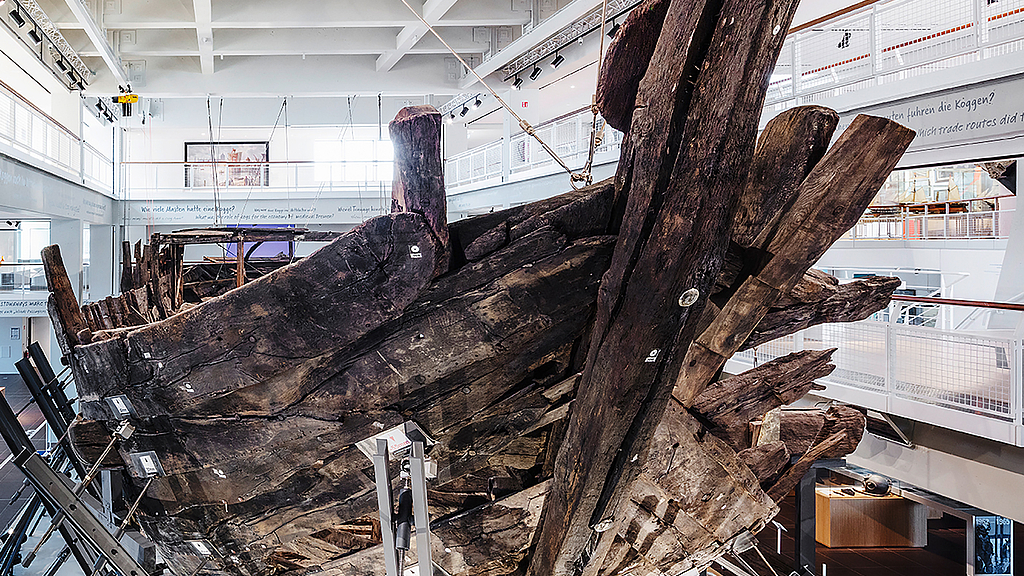Surveying the cog: How the medieval merchant ship is being studied
It still moves science - the Bremen Cog from 1380. Since its discovery on October 8, 60 years ago, the more than 600-year-old trading ship from the Middle Ages has been the focus of researchers and continues to drive minds to new discoveries. In the Kogge Hall of the German Maritime Museum / Leibniz Institute for Maritime History itself, however, the merchant ship is supposed to stand as motionless as possible. A team from the Institute for Applied Photogrammetry and Geoinformatics at Jade University of Applied Sciences (IAPG) is observing every change, no matter how small. The results of the monitoring will soon be published in a paper.
Every six months, Heidi Hastedt inspects the Cog millimeter by millimeter. The surveyor wants to know how much movement there is in the wood and whether the centuries-old wreck is stable on display.
Since 2020, the Cog has been under observation: Will it keep its shape? Is the wood changing? Steel struts have been giving the old merchant ship additional support for a few years now. But DSM restorer Silke Wiedmann wants to know exactly, and a sense of proportion is not enough. Precision is needed to ensure that the DSM's main exhibit from 1380 is preserved for the world for as long as possible. Wiedmann marked 400 sensitive points on the wreck where changes become visible. A team from the Institute for Applied Photogrammetry and Geoinformatics (IAPG) at Jade University, led by Heidi Hastedt, now regularly checks the wreck for changes as part of a cooperative venture. The professionals use state-of-the-art measurement methods with lasers and photogrammetry. "For me, it is a special project because the historic ship is unique and special for surveying. In addition, it is the largest object I have been involved with," Hastedt says.
The professionals have been collecting data for two and a half years. During each visit, a camera takes measurement images, from which the 3D position of the 400 measurement points are determined to better than a millimeter. The data is then compared with that of the previous measurement. "On the one hand, we create the 3D coordinates of the shipwreck using a photogrammetric method. Second, we measure reference points in the building structure where the Cog is located. In this way, we want to be able to say for sure what kind and size of deformations are taking place on the cog - if they are taking place," explains the engineer. In order not to put the fragile wood at additional risk, restorer Silke Wiedmann mounted the measuring points on special Japanese paper that was fixed to the Cog with vegetable glue. This allows them to be removed at any time without damaging the Cog's wood. Prof. Dr. Thomas Luhmann of the IAPG adds, "The project is of great scientific interest to us as well, because the measurement and evaluation technology developed can in principle also be used for other endangered objects, be they lighthouses or other museum objects."
Now that Hastedt has evaluated the first four epochs of the investigation, her most important message is that no changes have been seen so far, partly because the Cog hall is constantly air-conditioned. Still, she remains wary: "Because the museum is built on a peninsula, it moves with the tidal range. It is unclear whether the movements are always the same. That's why we can't yet be completely sure of the impact on the net as a reference for measuring the cog," she says geodesist. She brings all her experience from 21 years of professional practice to the Cog project, which has a high research character due to the diverse measurement techniques and the requirements.
Wiedmann and Hastedt's monitoring results will soon be published and made available to the public.


Surveying the Cog: 400 measuring points on the wreck are checked regularly.
Foto: DSM / Niels Hollmeier


